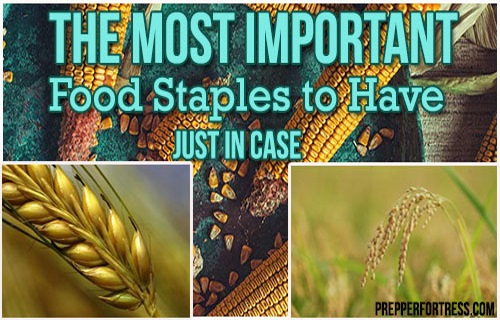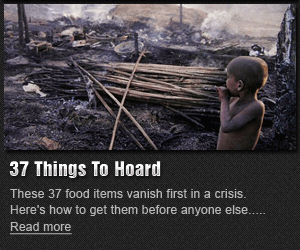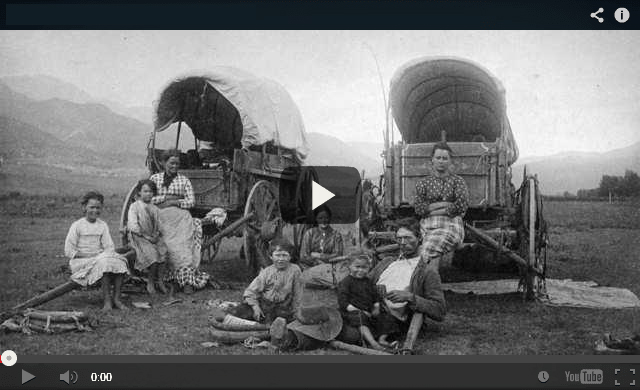In any collapse, common foods are going to be hard to come by. In a natural disaster or similar occurrence, most grocery stores will be out of food and water within hours. During hurricanes, we all remember seeing televised images of empty shelves at grocery stores.
In a worldwide catastrophe, not only will all food and water items be likely depleted from every place imaginable it will most likely never be refilled.
Those who are prepared for this crisis will have a much greater chance of survival significantly longer than those who have not put any thought into it.
The big question is what exactly would be the most important food staples to put away? Storing away nothing but cooking oil and canned tuna, will do very little to help you survive long term in a healthy state.
What are Food Staples?
Food staples are foodstuffs that have become routinely eaten by a particular population.The food staple usually provides the necessary vitamins and nutrients needed for that population’s daily nutritional requirements. Thus, that particular food item tends to be featured at almost every meal.
Most staples are grains, due to their abundance and easy cultivation.
In ancient times, food staples were used in case of time of famine or a less than expected harvest.
This was due to the ability for staple foods to store for long period of time. Staples are inherently non-perishable, seasons could come and pass but the harvest of one’s food staple crop would still be viable to eat.
What are the Most Important Staples?
The most sought after staples, according to WorldAtlas are; corn, wheat, and rice. These items are highly regarded as the best food staples due to their high vitamin and nutritional content plus they are found as a main ingredient in many typical dishes cooked around the world.
A rare characteristic that is found in these food staples is their extraordinary long shelf life. Food staples have been known to last, under favorable conditions, from 4 up to 25 years!
In contrast, common food products do not last long. Many typical canned foods can last up to 5 years. Frozen meat can be stored for up to six month without losing a significant amount of their nutritional value. Candy, snacks and soft drinks can have a shelf life of up to 18 months.
The weight of worrying on an expiration date will be nonexistent if you properly store and maintain any of the foods listed above.
As A Way To Introduce You To Skilled Survival, We’re Giving Away Our ‘Family First’ Food Planning Guide. Click Here To Get Your Copy.
The Benefits of Staple Foods
While staples are primarily used for a base of a variety of dishes, there are also practical applications to these food stuffs.
For example, wheat is incredibly versatile. Even without yeast or many other ingredients, bread can be created with relative ease. The nutrition found in wheat contains, carbohydrates, water, protein and small traces of other elements.
Corn is another food staple that can be made into a tortilla, acting as a very viable substitute for bread. This item also shares many of the same nutritional values of wheat, which makes it a very close second in importance.
Rice provides a large amount of carbohydrates, and a little bit of protein, which is why most Asian meals have rice served as a side dish and even as a main course. This makes this staple very energy efficient in the ratio of amount eaten to the amount of energy gained.
Where to Purchase your Food Staples
Buying items in bulk are usually the best way to go when trying to prep and not break the bank.
The availability of these items is common place in almost every neighborhood supermarket.
Larger stores, such as Costco, Sam’s Club, or any other larger bulk retailers not only sell in large quantities but often offer these items at favorable prices.
For the most part, buying online bulk orders would not make sense since the amount of weight and cost of shipping would make the food too pricey to make it worthwhile investment.
What happens if we lose power indefinitely — foods that require freezing or refrigeration for long term storage are going to go bad? Emergency food storage in advance will be the only way to feed yourself and your family.
Where and How to Store your Food Items
Before you begin your food purchases, to ensure the safety of your items and stored food, be sure to seek out vacuum sealed or oxygen free packaging. If not, most of food items will last no longer than 4 to 5 years.
Though storing these staples in your pantry works in the short term, eventually you’ll need to expand. Ideally you want to secure a larger area to store your surplus food stuffs. Suitable options would be a temperature controlled garage, storage building, or even a freight container.
Once located, the container size and the storage temperature are the most important factors on whether the food you stored will be dry and usable when the time comes.
Doing research and understanding the source of common accidents in storage or how food can spoil in storage will be a lifesaving information. Storing items without the sufficient care will lead to food shortage and bacterial growth and potentially attracting unwanted rodents or other pests.
Some storage tips from the LDS to keep in mind:
- Suggested Quantity to Store Per Month & Adult
- 25 lb./11.5 kg. per long term food item
- Recommended Storage Packaging
- Foil pouches (seal with a vacuum packaging machine)
- Mylar bags (seal with clothes iron or hair straightener)
- Empty #10 cans
- PETE bottles
When used with a combination of oxygen absorber and desiccant packets, stored foods become protected against bacterial and insect growth. It is also suggested to store sealed pouches and Mylar bags in a heavy-duty metal or plastic container off the ground to prevent pests or rodent infiltration.
- Desired Storage Conditions
- Keep food at 75°Fahrenheit/24°Celsius
- Protect items from sun exposure
Conclusion
Food staples are always worth having in your doomsday pantry. With the looming chance of a global apocalypse always on the horizon, stocking up while the “getting is good”, is much better than wishing you had after the fact. Information is priceless, and while hindsight is always 20/20, history has taught us that those who are prepared make it through to tell the tale.
Survival Food Prepping Ideas/ULTIMATE Top Skills 2017
Discover how to survive: Most complete survival tactics, tips, skills and ideas like how to make pemmican, snow shoes, knives, soap, beer, smoke houses, bullets, survival bread, water wheels, herbal poultices, Indian round houses, root cellars, primitive navigation, and much more at: The Lost Ways
The Lost Ways is a far-reaching book with chapters ranging from simple things like making tasty bark-bread-like people did when there was no food-to building a traditional backyard smokehouse… and many, many, many more!
Here’s just a glimpse of what you’ll find in The Lost Ways:
From Ruff Simons, an old west history expert and former deputy, you’ll learn the techniques and methods used by the wise sheriffs from the frontiers to defend an entire village despite being outnumbered and outgunned by gangs of robbers and bandits, and how you can use their wisdom to defend your home against looters when you’ll be surrounded.
Native American ERIK BAINBRIDGE – who took part in the reconstruction of the native village of Kule Loklo in California, will show you how Native Americans build the subterranean roundhouse, an underground house that today will serve you as a storm shelter, a perfectly camouflaged hideout, or a bunker. It can easily shelter three to four families, so how will you feel if, when all hell breaks loose, you’ll be able to call all your loved ones and offer them guidance and shelter? Besides that, the subterranean roundhouse makes an awesome root cellar where you can keep all your food and water reserves year-round.
From Shannon Azares you’ll learn how sailors from the XVII century preserved water in their ships for months on end, even years and how you can use this method to preserve clean water for your family cost-free.
Mike Searson – who is a Firearm and Old West history expert – will show you what to do when there is no more ammo to be had, how people who wandered the West managed to hunt eight deer with six bullets, and why their supply of ammo never ran out. Remember the panic buying in the first half of 2013? That was nothing compared to what’s going to precede the collapse.
From Susan Morrow, an ex-science teacher and chemist, you’ll master “The Art of Poultice.” She says, “If you really explore the ingredients from which our forefathers made poultices, you’ll be totally surprised by the similarities with modern medicines.” Well…how would you feel in a crisis to be the only one from the group knowledgeable about this lost skill? When there are no more antibiotics, people will turn to you to save their ill children’s lives.
If you liked our video tutorial on how to make Pemmican, then you’ll love this: I will show you how to make another superfood that our troops were using in the Independence war, and even George Washington ate on several occasions. This food never goes bad. And I’m not talking about honey or vinegar. I’m talking about real food! The awesome part is that you can make this food in just 10 minutes and I’m pretty sure that you already have the ingredients in your house right now.
Really, this is all just a peek.
The Lost Ways is a far–reaching book with chapters ranging from simple things like making tasty bark-bread-like people did when there was no food-to building a traditional backyard smokehouse… and many, many, many more!
And believe it or not, this is not all…
Table Of Contents:
The Most Important Thing
Making Your Own Beverages: Beer to Stronger Stuff
Ginger Beer: Making Soda the Old Fashioned Way
How North American Indians and Early Pioneers Made Pemmican
Spycraft: Military Correspondence During The 1700’s to 1900’s
Wild West Guns for SHTF and a Guide to Rolling Your Own Ammo
How Our Forefathers Built Their Sawmills, Grain Mills,and Stamping Mills
How Our Ancestors Made Herbal Poultice to Heal Their Wounds
What Our Ancestors Were Foraging For? or How to Wildcraft Your Table
How Our Ancestors Navigated Without Using a GPS System
How Our Forefathers Made Knives
How Our Forefathers Made Snow shoes for Survival
How North California Native Americans Built Their Semi-subterranean Roundhouses
Our Ancestors’Guide to Root Cellars
Good Old Fashioned Cooking on an Open Flame
Learning from Our Ancestors How to Preserve Water
Learning from Our Ancestors How to Take Care of Our Hygiene When There Isn’t Anything to Buy
How and Why I Prefer to Make Soap with Modern Ingredients
Temporarily Installing a Wood-Burning Stove during Emergencies
Making Traditional and Survival Bark Bread…….
Trapping in Winter for Beaver and Muskrat Just like Our Forefathers Did
How to Make a Smokehouse and Smoke Fish
Survival Lessons From The Donner Party
Books can be your best pre-collapse investment.
The Lost Ways (Learn the long forgotten secrets that helped our forefathers survive famines,wars,economic crisis and anything else life threw at them)
Survival MD (Best Post Collapse First Aid Survival Guide Ever)
Conquering the coming collapse (Financial advice and preparedness )
Liberty Generator (Build and make your own energy source)
Backyard Liberty (Easy and cheap DIY Aquaponic system to grow your organic and living food bank)
Bullet Proof Home (A Prepper’s Guide in Safeguarding a Home )
Family Self Defense (Best Self Defense Strategies For You And Your Family)
Survive Any Crisis (Best Items To Hoard For A Long Term Crisis)
Survive The End Days (Biggest Cover Up Of Our President)
Drought USA (Discover The Amazing Device That Turns Air Into Water)



